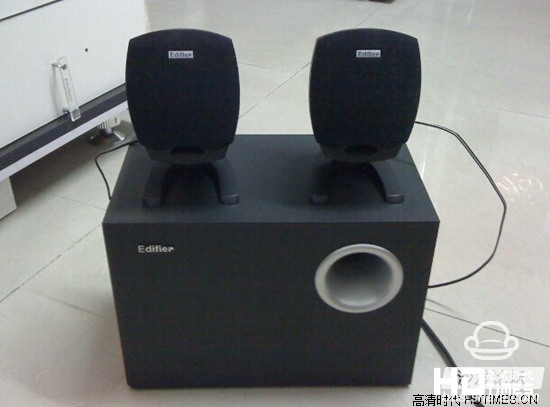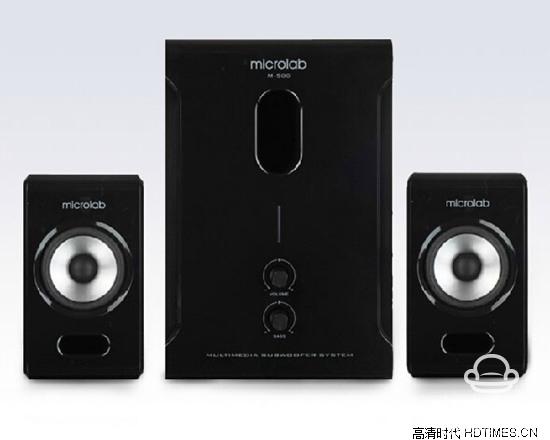Not long ago, he started a subwoofer sound, but when playing songs and movies, the sound is mostly tremolo, how to debug it? According to the author's experience, the subwoofer generally has three buttons (simple two button), respectively for the total volume adjustment, bass adjustment and treble adjustment, if it is two buttons, only the total volume adjustment and bass adjustment, usually The button is generally set to the middle position. If you still want to get better sound effects, see the specific debugging details below.

Subwoofers usually have some basic control tuning parameters that need to be adjusted, mainly with crossover points, volume, and phase.
1, frequency points
What needs to be adjusted is the low-pass filter of the subwoofer. The adjustment is based on the type of the main speaker. If your main speakers are very large and you only need to use the lowest frequency part of the signal through the subwoofer, you can set the frequency split point between 60Hz and 80Hz; if your main speakers are of medium size, then low-pass filtering The divider point can be set slightly higher, for example between 80Hz and 100Hz. If your main speaker is a small one, it is best to set the crossover point as high as possible (usually 120Hz to 150Hz).
2, the volume
Different frequency bands affect the law of human ear perception loudness:
1) At the frequency value f = 1000 HZ, the loudness value is equal to the value of the corresponding sound pressure level.
2) At 3000 HZ, this frequency area is the auditory sensitive area of ​​the human ear. Therefore, when mixing, boost the sound level in this band, the overall loudness will increase significantly.
3) In f
4) In f
5) In the high frequency region of f>5kHZ, the change in sound pressure level and loudness is basically the same. However, when the sound frequency exceeds 7 kHz, the sensitivity will be reduced to some extent.
It is worth noting that the subwoofer must not be overdone, even when watching large movies, it must not be more than two-thirds of the total volume. To listen to music, you can't send too much volume, which will cause your listening performance to be seriously distorted.
Subwoofer button
3, phase
As a form of vibration, the sound of course has a periodicity, so there is a concept of phase. The purpose of subwoofer phase adjustment is to have the same phase as the main speaker, so as not to cancel the sound and produce a more harmonious sound. The integrated sound of the main/subwoofer speaker is more balanced. The test shows immediately if there is any improvement: you may hear more or less low frequencies on one phase.
Changing the phase will have both positive and negative effects on the acoustics of your listening room, so that the sound you hear in the listening position will also be different.
As mentioned before, you sit in different positions in the listening area and let your assistant adjust the phase of an overweight subwoofer and listen repeatedly until the best sound is achieved. Of course, if the ear is not accurate enough, just use a sound pressure tester, use some software to sound the main speaker and subwoofer at the same time, and then adjust the phase (some guns can only adjust a few options Some of them are like Velideng's DD can be arbitrarily adjusted from 0 to 360.) To obtain relatively loud sound pressure in the audio-visual position, it is to obtain a relatively correct phase.
These are the specific details and precautions for home theater subwoofer audio debugging. How much have you learned?

Subwoofers usually have some basic control tuning parameters that need to be adjusted, mainly with crossover points, volume, and phase.
1, frequency points
What needs to be adjusted is the low-pass filter of the subwoofer. The adjustment is based on the type of the main speaker. If your main speakers are very large and you only need to use the lowest frequency part of the signal through the subwoofer, you can set the frequency split point between 60Hz and 80Hz; if your main speakers are of medium size, then low-pass filtering The divider point can be set slightly higher, for example between 80Hz and 100Hz. If your main speaker is a small one, it is best to set the crossover point as high as possible (usually 120Hz to 150Hz).
2, the volume
Different frequency bands affect the law of human ear perception loudness:
1) At the frequency value f = 1000 HZ, the loudness value is equal to the value of the corresponding sound pressure level.
2) At 3000 HZ, this frequency area is the auditory sensitive area of ​​the human ear. Therefore, when mixing, boost the sound level in this band, the overall loudness will increase significantly.
3) In f
4) In f
5) In the high frequency region of f>5kHZ, the change in sound pressure level and loudness is basically the same. However, when the sound frequency exceeds 7 kHz, the sensitivity will be reduced to some extent.
It is worth noting that the subwoofer must not be overdone, even when watching large movies, it must not be more than two-thirds of the total volume. To listen to music, you can't send too much volume, which will cause your listening performance to be seriously distorted.

Subwoofer button
3, phase
As a form of vibration, the sound of course has a periodicity, so there is a concept of phase. The purpose of subwoofer phase adjustment is to have the same phase as the main speaker, so as not to cancel the sound and produce a more harmonious sound. The integrated sound of the main/subwoofer speaker is more balanced. The test shows immediately if there is any improvement: you may hear more or less low frequencies on one phase.
Changing the phase will have both positive and negative effects on the acoustics of your listening room, so that the sound you hear in the listening position will also be different.
As mentioned before, you sit in different positions in the listening area and let your assistant adjust the phase of an overweight subwoofer and listen repeatedly until the best sound is achieved. Of course, if the ear is not accurate enough, just use a sound pressure tester, use some software to sound the main speaker and subwoofer at the same time, and then adjust the phase (some guns can only adjust a few options Some of them are like Velideng's DD can be arbitrarily adjusted from 0 to 360.) To obtain relatively loud sound pressure in the audio-visual position, it is to obtain a relatively correct phase.
These are the specific details and precautions for home theater subwoofer audio debugging. How much have you learned?